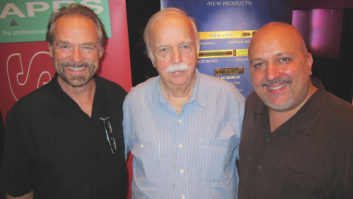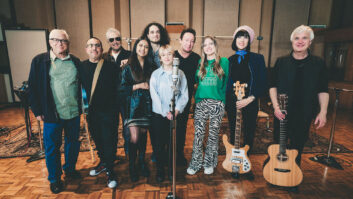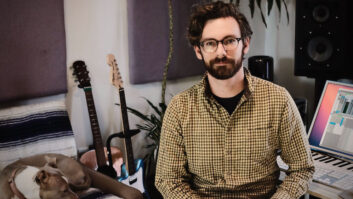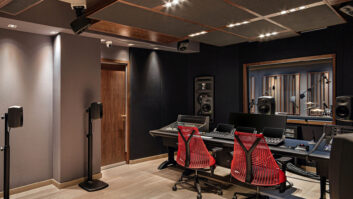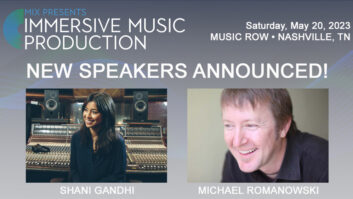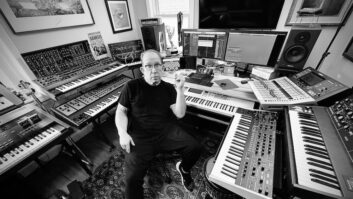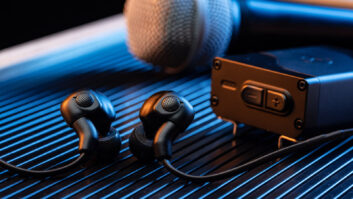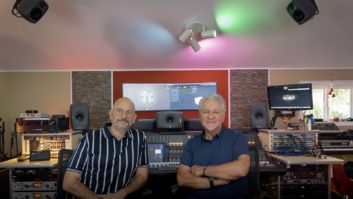Grammy-winning Telarc staff engineer Michael Bishop recentlyrecorded, mixed and mastered Prokofiev’s Romeo & JulietSuites with noted conductor Paavo Jarvi and the Cincinnati SymphonyOrchestra in full surround sound using a Sonoma digital audioworkstation and a matched set of ATC SCM-150 monitors.
“These days, concert halls are built using the most accuratemeasuring devices available,” said Bishop. “And there are certainlybenefits to the end sound when you use a modern HVAC system that keepsthe humidity of a hall at a constant level, for example. The oldconcert facilities that I love so much—Boston Symphony Hall,Mechanics Hall in Wooster and the Cincinnati Music Hall where werecorded the Cincinnati Pops Orchestra under the direction of ErichKunzel—sound so much better to my ears, though, and they were allbuilt by designers who were going on instinct! To be fair, I think thatthe materials that were available a century ago were, on the whole,better than what we have today. The old growth forests, in particular,have been depleted to a large extent, and the woods used in modernhalls don’t have the same sound.”
For this recording, Bishop recalled, “We really had fun on this one.The surround aspect helps convey the lushness of Prokofiev’sorchestration and the dynamics of the orchestra’s wonderful performanceof the Suites. It was great to know that we could capture a verywide soundfield, and also that this image would be played back bylisteners as we heard it.”
Bishop relied on the Sennheiser MKH 800 microphones during theRomeo and Juliet sessions. “I spread four MKH 800s across thefront of the orchestra and folded in a Neumann KU 100, which was placedin the middle of the soundfield, directly over the conductor. The soundof the binaural head on the KU 100 is gorgeous. Combining this outputwith the MKH 800s—one pair used to create the left and rightcomponents of the stereo mix, and another to help create the left frontand right front aspect of the surround mix—was extremelyeffective. It’s very important to use a family of microphones thatyields a uniform sound, and that’s why we rely so heavily on Sennheiserfor these kinds of projects. In fact, we also incorporated a double setof MKH 30 and MKH 50 mics in a double mid-side setup into thisrecording. I find that blending in the output of these microphoneshelps me manipulate the imaging, front to back, with greater controlover detail when it comes time to mix. I assign these mics to leftfront, left surround, and right front, right surround. During set up, Iplay around with the positioning of the mid MKH 50s, aiming them togive me the midfield sound I want. These microphones are veryimportant, because it helps me connect the soundfield from the stage tothe house. It also gives the impression of the height of the hall. Doesthis all sound complicated? Come to our next session and it will allmake sense!”
To round out his soundfield, Bishop placed a pair of Sennheiser MKH20 microphones in midway back in the hall. “The 20s complete thefront-to-back image. As I said, you want the whole surround image towork cohesively, and that’s only going to happen if you use a family ofmicrophones. I need a complete sonic signature from front to back, andfor me, that means using nothing but Sennheiser microphones.”
The ATC SCM-150 monitors traveled to all of the field recordingsthat Bishop tracks for Telarc. “The SCM-150s are extremely revealingand tonally transparent. They’re also very easy to set up, which isimportant to us. We use these monitors in our main post-productionroom, and we also take them on location in our own truck. We need thatconsistency of monitoring from recording through post, and it’simportant that we be able to set up monitors quickly when we’re out inthe field. Many high-end speakers are extremely room-dependent and takehours to set up just to find the perfect spot to place them. TheSCM-150s are rugged, and their directional characteristics are notoverly dependent on the room sound, which means we can align themquickly and get to work. I find it really hard to work well without ourATCs on session now!”
For more, visit www.sennheiserusa.com.
